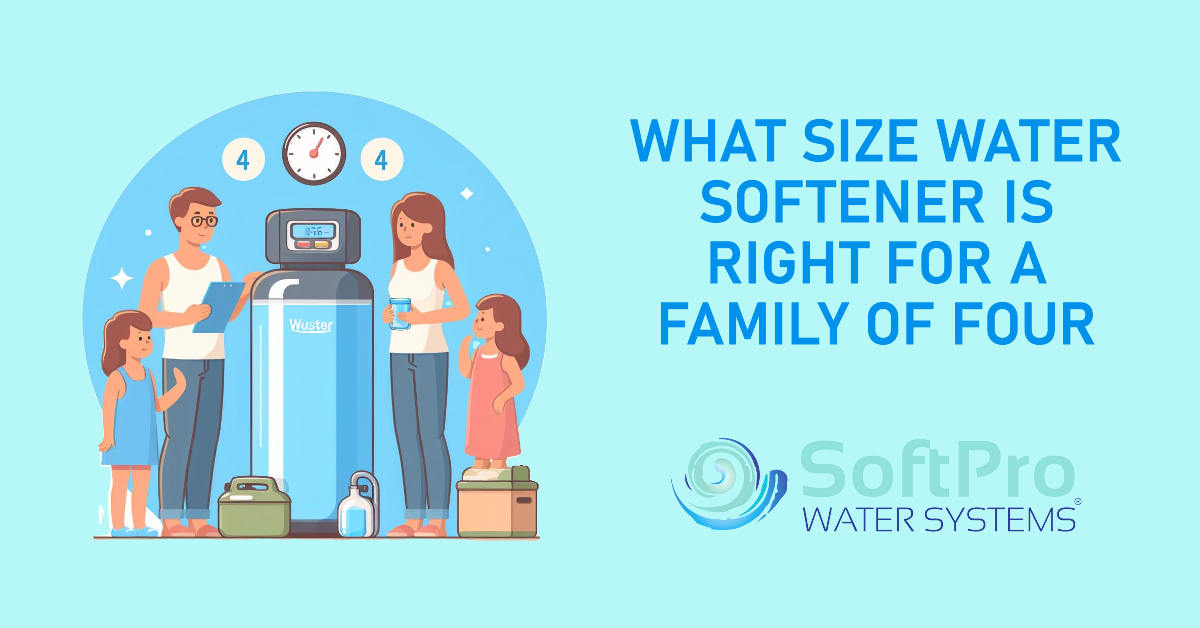How to Troubleshoot an Ion Exchange Water Softener?
Table of Contents
Understanding Your Ion Exchange Water Softener
Before tackling troubleshooting, let's equip ourselves with a solid understanding of your ion exchange water softener's core components and their roles. This foundational knowledge will prove invaluable in diagnosing and resolving any issues that may arise.
Key Components and Their Functions
Your water softener's functionality relies on a coordinated interplay of several essential components:
-
Resin Tank: This central chamber houses the resin beads, the workhorses responsible for the ion exchange process. These tiny beads are loaded with sodium ions and act like magnets, attracting and trapping hardness-causing minerals like calcium and magnesium from the incoming water. Different types of resins have varying capacities and regeneration requirements, so understanding your specific resin is crucial for optimal performance.
-
Brine Tank: Adjacent to the resin tank lies the brine tank, which stores the salty solution (brine) used for regenerating the resin. During regeneration, the brine flushes out the trapped hard minerals from the resin beads, preparing them for another round of softening. Maintaining proper salt level and brine concentration in this tank is essential for efficient regeneration.
-
Control Valve: This serves as the brain of your water softener, governing the entire operation. It controls the regeneration cycles, adjusts settings like water flow rate and bypass valve operation, and even throws error codes when it detects irregularities. Understanding your specific control valve's settings and error codes will be your key to accurate diagnosis and troubleshooting.
-
Additional Components: Beyond these core elements, your water softener relies on a network of supporting components like distributor tubes for even water flow, bypass valves for maintenance and system isolation, water connections for inlet and outlet, and electrical components for powering the system. Each component plays a crucial role in the smooth functioning of your water softener.
Recognizing the Signs: Common Water Softener Problems
Your trusty water softener might not always be singing its melodious tune of soft water. Certain telltale signs can indicate that something's amiss. Recognizing these symptoms early on is crucial for timely troubleshooting and preventing further issues. So, what are the red flags to watch out for?
Hard Water Output
The very essence of a water softener's existence is to, well, soften water. So, if you're still noticing signs of hard water – like filmy residue on glasses, scaly buildup on faucets, or stiff laundry – it's a clear indication that your system isn't performing as expected. This could be due to various factors, including:
- Low Resin Capacity: Over time, the resin beads become saturated with trapped hardness minerals, reducing their capacity for further softening.
- Insufficient Regeneration: Improperly timed or incomplete regeneration cycles leave the resin partially loaded with minerals, impacting its effectiveness.
- Bypass Valve Malfunction: If the bypass valve remains partially open, hard water bypasses the softening process, negating its effects.
High Salt Usage
While salt is the fuel that keeps your water softener running, excessive consumption can raise eyebrows and your water bill. This could be a symptom of:
- Leaks: Internal or external leaks within the system can lead to brine solution being wasted, driving up salt usage.
- Inefficient Regeneration: Faulty settings or component malfunctions can cause unnecessary regeneration cycles, consuming more salt than necessary.
- Incorrect Salt Level: An excessively high salt level in the brine tank can lead to oversaturation and brine wastage.
Frequent Regeneration
More isn't always merrier, especially when it comes to regeneration cycles. If your water softener regenerates more frequently than usual, it could be due to:
- High Water Hardness: Water with exceptionally high mineral content naturally demands more frequent regeneration to maintain efficient softening.
- Malfunctioning Valve: A faulty control valve might incorrectly trigger regeneration cycles even when unnecessary.
- Incorrect Settings: Inappropriate settings for water hardness or regeneration intervals can lead to excessive cycles.
Troubleshooting Steps and Solutions
Now that we've identified the potential culprits behind your water softener's woes, it's time to step into the role of a troubleshooting hero! This section equips you with practical steps and solutions to tackle the most common water softener issues head-on. Remember, safety first! Always shut off the water supply and electrical power to your softener before embarking on any tinkering.
Hard Water Output
If your water softener has stopped singing the sweet melody of softness, here's how to get it back on track:
- Cleaning the Resin Tank: Over time, sediment buildup can reduce the resin's effectiveness. A simple cleaning procedure involving backwashing and rinsing the tank can often restore performance. Consult your specific model's manual for detailed instructions.
- Adjusting Regeneration Cycles: If cycles are infrequent or insufficient, consider increasing their frequency or duration based on your water hardness level. Refer to your manual or manufacturer's recommendations for optimal settings.
- Checking the Bypass Valve: Ensure the bypass valve is fully closed, preventing untreated water from bypassing the softening process. A partially open valve can significantly diminish softener effectiveness.
High Salt Usage
A salty situation doesn't have to drain your wallet. Here's how to curb excessive salt consumption:
- Identifying Leaks: Inspect all connections, hoses, and the brine tank itself for leaks, which can waste brine solution and inflate salt usage. Look for signs like dripping or dampness around potential leak points.
- Optimizing Settings: Analyze your current regeneration settings and adjust them as needed. Consult your manual or manufacturer's support for guidance on optimizing cycles and salt consumption based on your water hardness level.
- Correcting Salt Level: Maintain the appropriate salt level in the brine tank as per your model's specifications. An excessively high level can lead to wastage, while an insufficient level can impact regeneration efficiency.
Frequent Regeneration
If your water softener seems to be stuck in a regeneration loop, here's how to restore balance:
- Testing Water Hardness: Accurately measuring your water hardness level will help determine the necessary frequency of regeneration cycles. Consider using a home water hardness test kit for reliable results.
- Troubleshooting the Valve: A malfunctioning control valve can trigger unnecessary regeneration cycles. Consult your manual or seek professional assistance to diagnose and potentially repair the valve.
- Reviewing Settings: Double-check your regeneration settings, ensuring they are appropriate for your water hardness level and softener model. Incorrect settings can lead to excessive cycles and wasted water.
When to Call a Professional
While troubleshooting common water softener issues can be empowering and cost-effective, some situations demand the expertise of a qualified plumber or water treatment technician. Recognizing these scenarios can save you time, frustration, and potentially prevent further damage to your system. Here are some red flags that signal it's time to call in the pros:
Complex Electrical Issues and Wiring Concerns
Messing with electrical components can be dangerous and should always be left to certified professionals. If you suspect any electrical problems, such as faulty wiring, sparking, or malfunctioning control board issues, immediately shut down the system and contact a qualified technician.
According to the National Electrical Contractors Association (NECA), over 32,000 electrical home fires occur annually due to faulty wiring and equipment, highlighting the importance of professional intervention for electrical tasks.
Malfunctioning Control Valves or Major Component Replacements
Replacing or repairing complex components like the control valve often requires specialized knowledge and tools. Attempting DIY fixes on crucial components can lead to further issues and potentially void your warranty.
"Control valves are the brains of water softeners, and improper repair can disrupt the entire system's functionality," emphasizes Mike Smith, a licensed plumber with over 20 years of experience. "For complex valve repairs or replacements, consulting a professional ensures proper diagnosis and efficient resolution."
Suspected Warranty Issues Requiring Manufacturer Support
If your water softener is still under warranty and you suspect a manufacturing defect or malfunction, contacting the manufacturer directly is your best course of action. Attempting DIY repairs during the warranty period can void your coverage and leave you responsible for repair costs.
According to the Homeowners Protection Bureau, over 40% of homeowners are unaware of their warranty rights and benefits, potentially missing out on free repairs and replacements.
Essential Practices for a Flawless Softening Future
Conquering hard water isn't a one-time victory; it's a journey requiring consistent care and maintenance. By incorporating these simple yet effective practices into your routine, you can ensure your water softener continues to perform optimally, delivering years of blissful soft water.
Scheduling Preventative Maintenance
Just like your car, your water softener benefits from regular checkups. Scheduling annual or bi-annual preventative maintenance with a qualified professional is crucial for:
- Early Detection: Technicians can identify potential issues before they snowball into bigger problems, saving you time and money on repairs.
- Optimal Performance: Routine maintenance ensures efficient regeneration cycles, proper salt usage, and overall system optimization, leading to cost savings and peak performance.
- Extended Lifespan: Regular professional care helps prevent premature wear and tear, extending the lifespan of your water softener and maximizing your investment.
"Think of preventative maintenance as an investment in your water softener's future," advises Sarah Jones, a water treatment specialist with over 10 years of experience. "Regular checkups can prevent costly repairs and extend the life of your system, ensuring years of trouble-free soft water enjoyment."
Maintaining Proper Salt Levels
Remember, salt is the fuel that keeps your water softener running. Maintaining the appropriate level in the brine tank is vital for efficient regeneration and optimal performance. Here's how to stay on top of it:
- Schedule Regular Checks: Check the brine tank level monthly to ensure it's within the recommended range specified in your manual.
- Avoid Extremes: Overfilling the tank can lead to wastage and brine overflow, while underfilling can impact regeneration efficiency.
- Choose the Right Salt: Opt for high-quality water softener salt specifically designed for ion exchange systems. Avoid using alternative salts like rock salt, which can damage the resin beads.
According to the Water Quality Association, improper salt usage and maintenance are among the leading causes of water softener malfunctions, highlighting the importance of proper salt management.
Simple DIY Maintenance Routines
Beyond professional checkups, you can perform these simple DIY maintenance tasks to keep your water softener running smoothly:
- Backwashing the Resin Bed: Periodically backwashing the resin bed helps remove accumulated sediment and improve its efficiency. Consult your manual for specific instructions on how to perform this process for your model.
- Cleaning the Brine Tank: Annually clean the brine tank to remove any salt buildup or sludge that could hinder regeneration. Follow the cleaning instructions outlined in your manual.
- Checking Valves and Connections: Regularly inspect valves and connections for leaks or signs of wear and tear. Tighten any loose connections and address any leaks promptly.
Bonus Tips and Hacks: Squeezing the Most Out of Your Water Softener
With your water softener humming happily and delivering its soft water magic, why not turn up the dial on its effectiveness? These bonus tips and hacks will help you maximize your experience and get the most out of your trusty softening ally:
Optimizing Performance for Efficiency:
- Water Usage Monitoring: Track your water usage patterns and adjust regeneration cycles accordingly. Shorter cycles for low usage periods can save salt and water.
- Bypass Valve Utilization: During periods of low water demand, consider partially opening the bypass valve to direct some unsoftened water to non-critical tasks like outdoor watering or toilets.
- Water Hardness Testing: Regularly test your water hardness to adjust regeneration settings based on actual levels. Over-regeneration for softer-than-needed water wastes resources.
"By understanding your water usage patterns and hardness levels, you can fine-tune your water softener's settings for optimal efficiency and resource conservation," advises James Lee, a water conservation specialist. "A little monitoring and adjustment can go a long way in saving water and salt."
Environmentally Conscious Softening:
- Choosing Eco-Friendly Salts: Consider using sustainably sourced salt pellets made from evaporated seawater or brine water purification processes. These options minimize environmental impact compared to mined rock salt.
- Investigating Alternative Systems: For specific water needs, explore options like demand-operated softeners that only regenerate when softened water is actually needed, further reducing salt and water usage.
- Water Conservation Practices: Pair your water softener with other water-saving habits like fixing leaky faucets, using low-flow appliances, and taking shorter showers. Every drop counts!
According to the Environmental Protection Agency (EPA), water softeners account for roughly 2% of residential water use in the U.S. Implementing eco-friendly practices can significantly reduce this footprint and contribute to water conservation efforts.
Extending Your Softener's Lifespan:
- Filter Installation: Consider installing a sediment filter upstream of your water softener to prevent sediment buildup in the system and extend the lifespan of the resin bed.
- Holiday Mode Activation: If you'll be away for extended periods, activate "holiday mode" on your softener (if available) to minimize unnecessary regeneration cycles and salt usage.
- Warranty Coverage: Familiarize yourself with your water softener's warranty terms and conditions. Promptly address any issues within the warranty period to avoid costly repairs later.
"Just like any valuable appliance, proper care and maintenance extend the lifespan of your water softener," emphasizes John Miller, a water treatment service manager. "Investing in preventative measures and following manufacturer guidelines can keep your system running smoothly for years to come."
Conclusion: Conquering Hard Water – A Soft Touch for Years to Come
Facing the challenges of hard water doesn't have to involve endless battles with scaly, filmy, and stiff consequences. Armed with the knowledge and practical tips provided in this comprehensive guide, you're now empowered to troubleshoot and maintain your ion exchange water softener like a pro!
Key Takeaways:
- Recognize the Signs: Be an astute observer of your water softener's health. Hard water output, excessive salt usage, and frequent regeneration cycles are red flags requiring attention.
- Diagnose the Issue: Understand the potential culprits behind these symptoms, ranging from low resin capacity and inefficient regeneration to faulty valves and incorrect settings.
- Take Action: Equip yourself with the troubleshooting steps provided for each common issue, including cleaning the resin tank, adjusting regeneration cycles, and checking salt levels and valves.
- Seek Professional Help: When complex electrical issues, malfunctioning control valves, or warranty concerns arise, don't hesitate to call in a qualified plumber or water treatment technician.
- Maintain for Optimal Performance: Regular preventative maintenance, proper salt management, and simple DIY cleaning routines are key to ensuring your water softener's longevity and efficient operation.
- Maximize Your Experience: Optimize performance by monitoring water usage and hardness, explore eco-friendly salt options, and consider alternative systems for specific needs. Extend the lifespan with sediment filters, "holiday mode" activation, and prompt warranty-related actions.
Beyond Troubleshooting:
This guide is just the beginning of your journey. Remember, ongoing research and learning can further strengthen your water softener expertise. Exploring online forums, manufacturer support resources, and industry publications can keep you updated on the latest troubleshooting tips, maintenance techniques, and technological advancements in the world of water softening.
Embrace Soft Water:
Conquering hard water isn't just about tackling mineral deposits; it's about embracing a world of soft, luxurious water that improves your home life in countless ways. From softer skin and laundry to cleaner dishes and appliances, the benefits are undeniable. So, take proactive care of your water softener, implement the knowledge you've gained, and enjoy the blessings of soft water for years to come!




![SoftPro Chlorine+ Carbon Whole House Water Filter to Remove PFAS, Chlorine, Chloramine & Pesticides [City Water Filters Series]](http://www.softprowatersystems.com/cdn/shop/products/softpro-whole-house-chlorine-filter-282008.jpg?v=1758858973&width=140)
![SoftPro Iron Filter - Iron Master AIO - Best Iron Filter for Well Water [Air Injected Water Filter / Katalox]](http://www.softprowatersystems.com/cdn/shop/products/softpro-iron-master-aio-water-filtration-system-remove-iron-sulfur-manganese-using-air-injection-for-optimal-performance-412868.jpg?v=1758859831&width=140)













